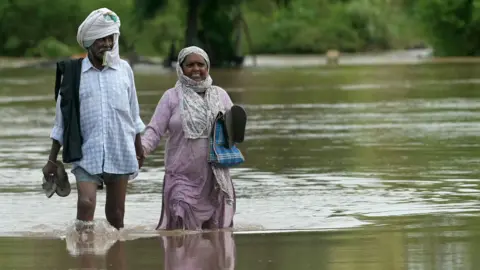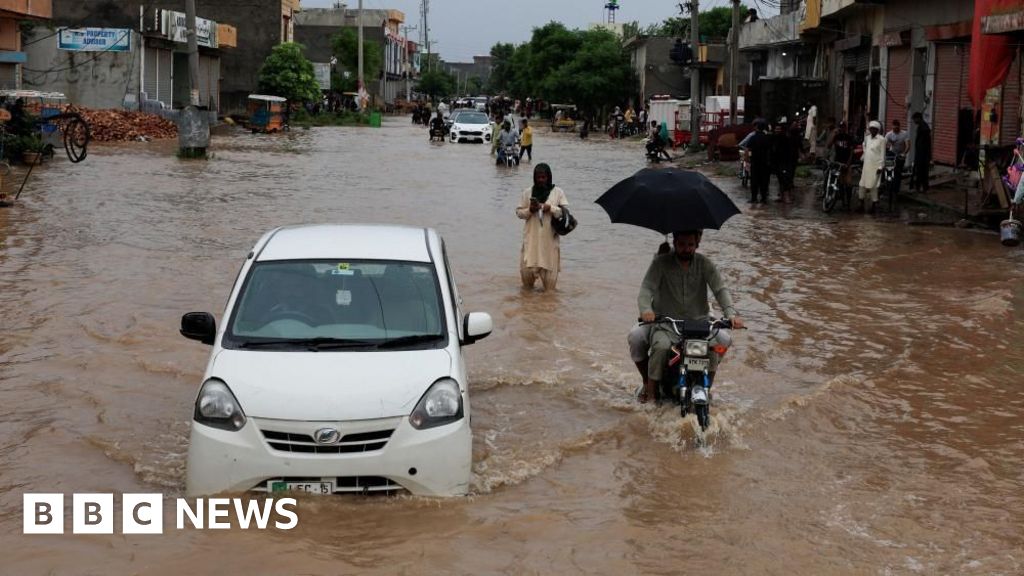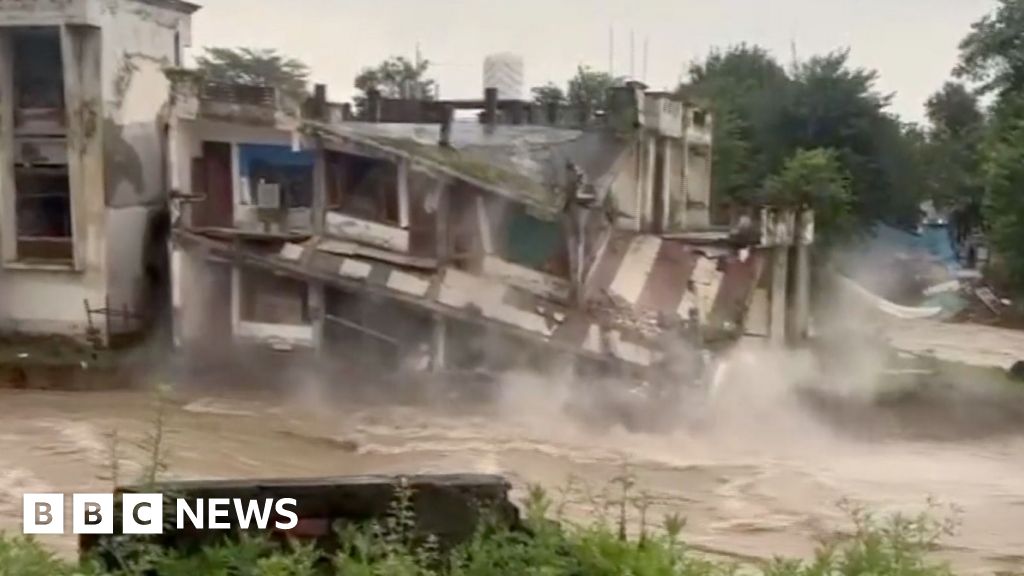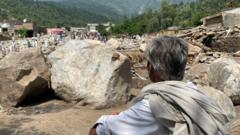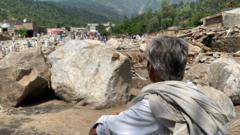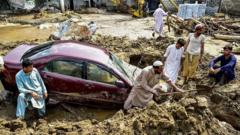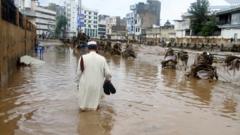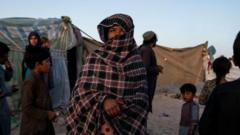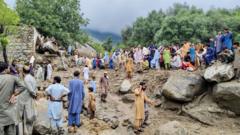This incident marks another episode in a series of extreme weather phenomena that have plagued Pakistan in recent years, previously characterized by intense heat waves and flooding, all believed to be exacerbated by climate change. The current monsoon season commenced in late June, and as of now, it has reportedly caused the deaths of at least 180 individuals while injuring hundreds more.
Chakwal, located approximately 60 miles south of Islamabad, stands out as one of the most severely impacted regions. Local residents, like 56-year-old farmer Malak Jamil, have witnessed devastating losses to both homes and crops, estimating personal damages at over $6,000. Jamil's account highlights the dire situation, expressing uncertainty on how to recuperate from this disaster.
Access to many areas has been severely hindered, prompting the Pakistani military to conduct air evacuations for over a hundred stranded individuals, as reported by Pakistan Television. Authorities are actively advising people residing in flood-prone areas to adhere to evacuation directives and seek refuge in elevated locations.
The meteorological outlook suggests a temporary respite from the heavy rains as a break is anticipated on Friday. Nonetheless, the provincial government has issued warnings regarding safety, urging citizens to avoid downed power lines and flooded electrical appliances that pose electrocution risks.
The United Nations Children’s Fund (UNICEF) raised alarms about the escalating dangers children face due to the flooding, ranging from the threat of drowning and collapsing structures to an increase in waterborne diseases.
Climate experts have connected the increasingly severe flooding trends in Pakistan over the past years to climate change, indicating that anthropogenic global warming has intensified rainfall, particularly during the monsoon season, which occurs from July to September. The catastrophic flooding witnessed in 2022 remains one of the worst in Pakistan's history, leading to the demise of more than 1,700 citizens and leaving millions in recovery.
The situation emphasizes the urgent need for continuous monitoring, disaster preparedness, and climate adaptation measures to tackle the ongoing impacts of climate change on vulnerable populations in Pakistan.
Chakwal, located approximately 60 miles south of Islamabad, stands out as one of the most severely impacted regions. Local residents, like 56-year-old farmer Malak Jamil, have witnessed devastating losses to both homes and crops, estimating personal damages at over $6,000. Jamil's account highlights the dire situation, expressing uncertainty on how to recuperate from this disaster.
Access to many areas has been severely hindered, prompting the Pakistani military to conduct air evacuations for over a hundred stranded individuals, as reported by Pakistan Television. Authorities are actively advising people residing in flood-prone areas to adhere to evacuation directives and seek refuge in elevated locations.
The meteorological outlook suggests a temporary respite from the heavy rains as a break is anticipated on Friday. Nonetheless, the provincial government has issued warnings regarding safety, urging citizens to avoid downed power lines and flooded electrical appliances that pose electrocution risks.
The United Nations Children’s Fund (UNICEF) raised alarms about the escalating dangers children face due to the flooding, ranging from the threat of drowning and collapsing structures to an increase in waterborne diseases.
Climate experts have connected the increasingly severe flooding trends in Pakistan over the past years to climate change, indicating that anthropogenic global warming has intensified rainfall, particularly during the monsoon season, which occurs from July to September. The catastrophic flooding witnessed in 2022 remains one of the worst in Pakistan's history, leading to the demise of more than 1,700 citizens and leaving millions in recovery.
The situation emphasizes the urgent need for continuous monitoring, disaster preparedness, and climate adaptation measures to tackle the ongoing impacts of climate change on vulnerable populations in Pakistan.




